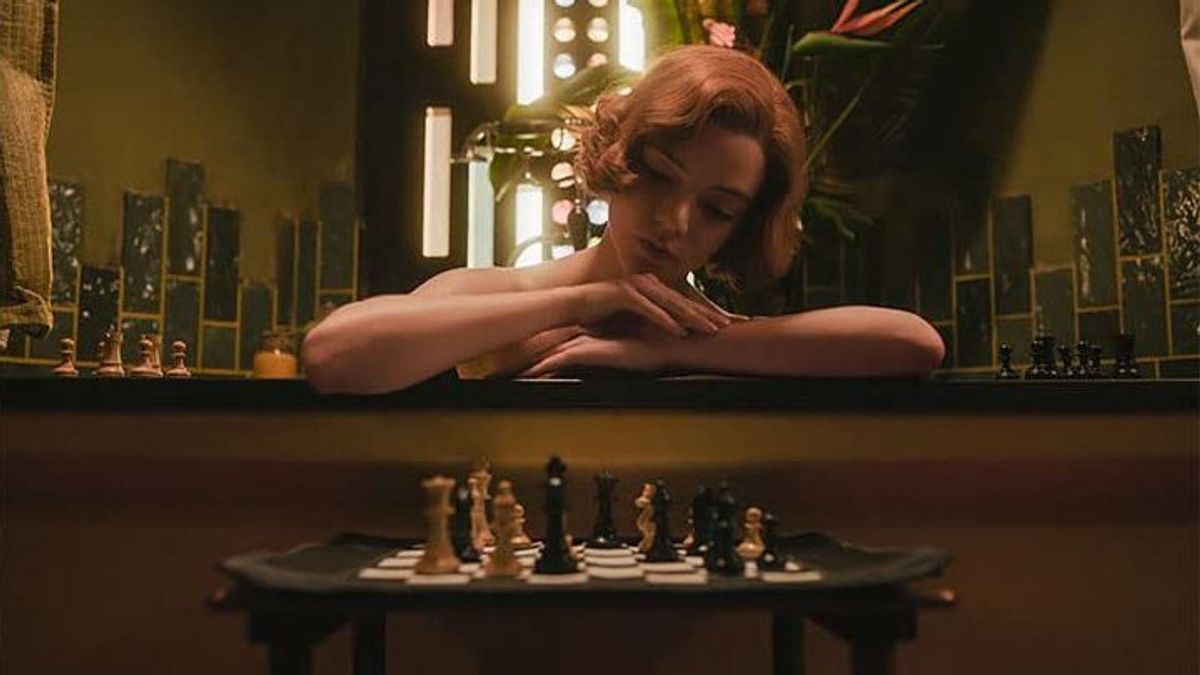JAKARTA - Have you ever wondered how chess can be called a sport? Chess is classified as a sport because of the strenuous activity the brain performs during the game. Chess requires concentration because it relies on strategy and is closely related to standard rules. What are the rules in chess?
Chess was recognized as one of the world's official sports in 2000 by the International Olympic Committee (IOC). Previously, chess was called a game. After that recognition, a special chess Olympiad is held every two years, which is denser than other sports which are held once every four years.
The uniqueness, complexity, and dynamics of the game of chess continue to evolve along with the development of world computer technology. Even so, there are a number of standard rules in chess. These rules are formally established by the Federation International Des' Eches (FIDE).
Chess rules
As quoted from the official website of FIDE, the first rule in chess is that the game must be played with sportsmanship. It is not allowed for a player to interfere with the opponent's concentration. The game of chess is also based on the strong philosophy that every player must be an athlete, always guided by the slogan Chess Gen's Una Sumus, which means "We Are One Family".
The second rule, chess is a game where players take turns. The white pawn player is given the opportunity to go first. After that, the black pawn player. And so on. Then, the pieces that have been touched must be executed. Except that the piece was impossible to run. The fourth rule, the player's move is declared complete when the player releases the pawn from the hand.
Fifth, the pieces held by and touching the opponent's property must be eaten, unless it is not possible. Then, players are given the freedom to eat or not pawn pieces that are pushed two steps and parallel to the opponent's pawn. Then, the promotion pawn or final tile must be changed, it's up to the player concerned.
Another situation in the rule is when the position is check or ster. The rules give freedom in this situation to be 'spoken' or not. So a player does not always have to say "check" or "ster." the pawn is declared dead when the opponent surrenders, the king is against the checkmate, or the time is up. Since 1995, FIDE has established the official rules for playing chess with 40 steps in 90 minutes, followed by an additional 30 minutes until completion and an additional 30 seconds per move.
Another rule is regarding draws. This situation occurred based on the agreement of two parties. The draw also occurs when the game is in perpetual check three times in a row, the building is the same three times in a row or two players do not eat each other's chess pieces for 40 moves.
Others, related to the castle. There are two ways to castle. First, long castles and short castles. The king must be held first, provided that the king is not threatened by the opponent's pawn. In another situation, the king is in a state of being threatened (open) or by taking a wrong step by the opponent. In that state, the steps cannot be repeated.
Rockade is a special move in the game of chess. This movement involves the king and the rook of the same color. The notation for castling in descriptive and algebraic chess systems is 0-0 if the king is next to the rook and 0-0-0 if the queen is beside the rook.
Chess pieces steps
One set of chess pieces consists of 16 pieces, namely pawn, rook, horse (knight), elephant (bishop), queen, and king.
Pawns are the most basic pieces in the game. Each player has eight pawn pieces. In the first move, the pawn can move as much as one or two squares. After that, the pawn can only walk one square. Pawns can only eat other parts of the box that are diagonally away from their position. Pawns can only move forward. Do not step back.
The rook is shaped like a palace tower. It moves horizontally and vertically as far as possible. All opponents in its path can be eaten. Next, there is a horse pawn (knight). As the name implies, the horse pawn is in the shape of a horse's head. Walking horse pawns in an L shape consisting of two horizontal and one vertical square or vice versa.
The horse can only eat the pieces that are in the box it is in. What's interesting about the horse, it is the only piece that can jump over other pieces. After horses, there are elephants (bishop). This hat-shaped pawn can only move vertically. Like a rook, the elephant pawn can move as far as possible.
Next, the queen pawn. This piece is the most powerful. The shape is crowned. The chess pieces can move freely, either horizontally, vertically, or diagonally with an unlimited distance. Lastly, the king pawn. The king can only move one box in any direction. Although not as powerful as the queen, the king was a piece that the player had to guard, no matter what. If your opponent eats your king, then you lose.
Strategy using pawns
If the king has a large value as a piece to protect, the other pieces have their respective values that can determine the game. To finalize a chess game strategy, you must understand the advantages of pawns.
Queen, is the most versatile. Queen is very useful for protecting pawns or doing double attacks (forking). The queen combines the strength of the bishop and the rook in one piece. After the king, the queen is the most valuable.
Next is the horse (knight). The horse is very useful for surprise attacks, as well as forks. The movement patterns of a horse that can pass through the pieces on the board can be very unpredictable and confuse novice players.
Then, the elephant (bishop). This pawn usually excels in an open position. However, many novice players sometimes underestimate elephants and don't use them to their full potential. The rook is one of the most powerful pieces due to its long stride and attack distance. Rooks are great for playing in open ranks.
Pawns might not be the strongest. But pawns can be very useful as traps, forcing opponents to sacrifice certain pawns in a pinchy situation. In fact, in important and properly utilized games, pawns often checkmate the king.
*Read other information about CHESS or read other interesting articles from Yudhistira Mahabharata.
Other SOLID NEWS
SEE ALSO:
The English, Chinese, Japanese, Arabic, and French versions are automatically generated by the AI. So there may still be inaccuracies in translating, please always see Indonesian as our main language. (system supported by DigitalSiber.id)


















